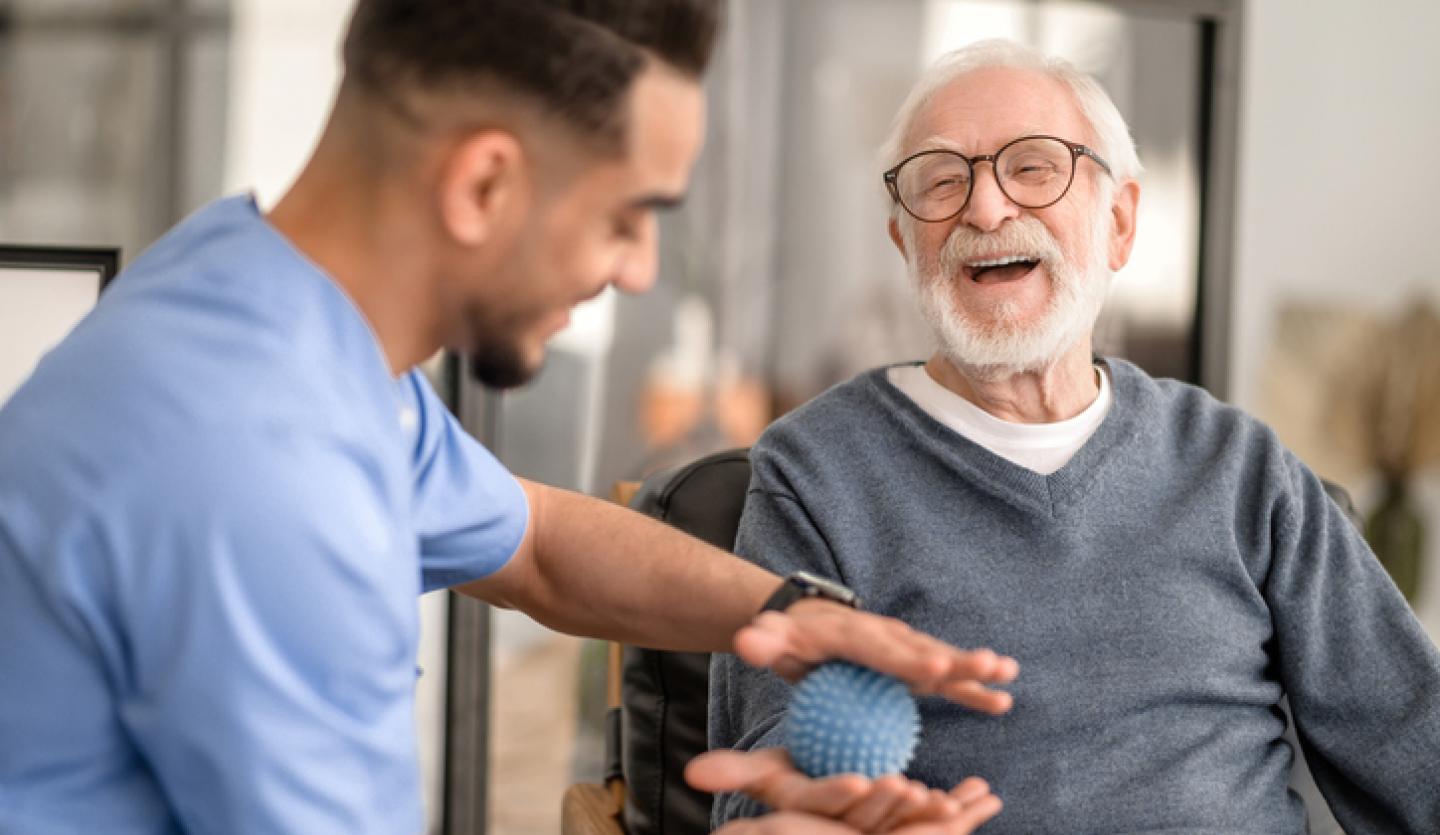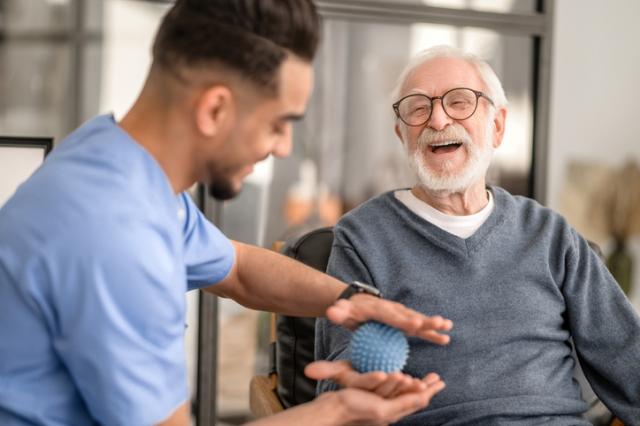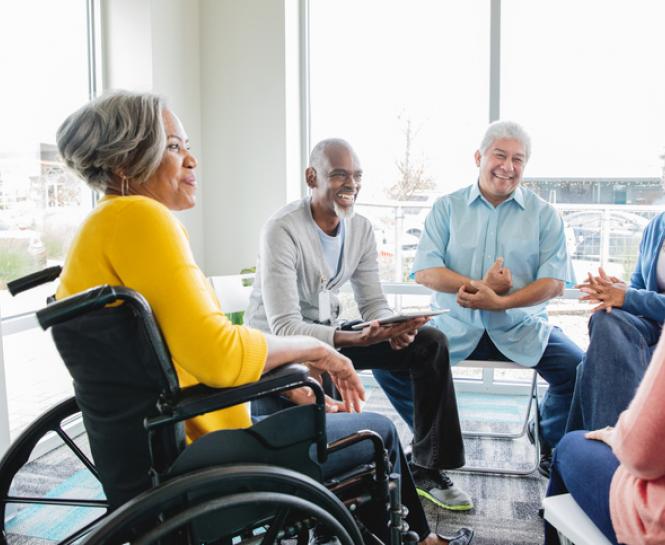Stroke is the leading cause of disability in the United States and 40% of patients experience moderate to severe impairments, according to the American Stroke Association (ASA).
Catholic Health Advanced Rehabilitation Medicine Physician Anuja Korlipara, MD, shares the importance of stroke rehabilitation (rehab) following a stroke.
What is stroke rehabilitation?
Stroke rehab is an essential part of a stroke patient’s recovery to help relearn basic skills—walking, dressing, bathing, eating—that may be compromised due to damage to one or more areas of the brain. Rehabilitation is a comprehensive program that addresses physical, cognitive and emotional challenges to help patients regain their independence as well as learn lifestyle habits that can help prevent a secondary stroke.
Goals for a stroke patient may include:
- Improved communication
- Improved mobility
- Improved cognition
- Self-care management
- How to adapt emotionally and socially
What therapies are used in stroke rehabilitation?
Therapies include cognitive, occupational, physical, and speech. Treatments and exercises are tailored to each patient depending on the severity of their stroke and impairments.
A dedicated care team works one-on-one with a patient to help with:
- Cognitive issues
- Ease of mobility when transferring (including beds and cars)
- Endurance and deep breathing
- Gait/walking issues
- Lack of coordination
- Loss of control of body movements
- Posture/balance issues
- Loss of sensation
- Speaking and/or comprehension difficulties
- Stair negotiation
- Swallowing issues
- Visual loss
- Weakness in extremities such as arms and legs (stroke patients may experience weakness on one side of their body)
What are the types of stroke rehabilitation?
Inpatient rehabilitation. Stroke rehab can begin in the hospital as early as two days following a stroke, but depends on the severity of a patient's stroke and their medical team's recommendation for treatment. A patient may be recommended to continue inpatient rehabilitation care at:
- An acute inpatient rehabilitation facility; or
- A skilled nursing facility (SNF)
Outpatient rehabilitation. Stroke rehab will continue at a dedicated outpatient facility after a patient is discharged from the hospital or other inpatient rehabilitation facility. This may include:
- Rehabilitation at an outpatient rehabilitation facility
- Home care
What is inpatient stroke rehabilitation?
Inpatient stroke rehab is for hospital-based patients who receive 24-hour care under the supervision of doctors and nurses. Patients need to be medically stable and able to tolerate three hours of daily therapy at least five to six days a week.
The average length of stay for inpatient rehabilitation is two to three weeks depending on the severity of neurological deficits and co-morbid conditions. Prior to discharge, a patient’s medical care team will review and recommend an outpatient rehab plan. Caregivers are often included in discussions.
What is outpatient stroke rehabilitation?
Outpatient stroke services are provided in a rehab center that has advanced equipment and resources to offer a wide variety of services targeted to the specific needs of each patient. The frequency of therapy is typically two to three times per week.
Patients will be given physical therapy exercises supervised by a physiatrist and dedicated rehab team. They may also need occupational therapy and speech therapy.
Who oversees a stroke rehabilitation program?
Stroke rehab is a multi-coordinated approach overseen by a care team that includes:
- Neurologist
- Physiatrist
- Rehabilitation nurse
- Licensed physical therapist
- Licensed occupational therapist
- Speech therapist
- Neuropsychologist
- Dietitian/nutritionist
- Social worker/case manager
- Recreational therapist
- Music therapist
What other treatments are used for stroke rehabilitation?
- Constraint induced therapy to promote use of the weaker limb affected by the stroke.
- Electric skill stimulation to improve brain function.
- Mirror therapy to improve arm and hand function.
- Videofluoroscopy to diagnose and treat swallowing disorders.
- Medications to manage spasticity, depression, pain and cognitive impairment.
- Cognitive rehab to improve memory and cognition.
- Sensory re-education to retrain the brain to process sensory signals.
How long do patients need stroke rehabilitation?
Recovery can continue for months and years after a patient’s stroke. Exercises learned during rehabilitation are an important part of long-term care and developing healthier lifestyle habits to help reduce the possibility of a secondary stroke.
For patients who can continue rehab at home, their care team will provide exercises that can be safely done and modified as needed.
In addition to rehab, finding support at stroke survivor groups can help patients and their caregivers. Learn more about the importance of stroke support.
Find care at Catholic Health
Catholic Health offers stroke rehabilitation services across Long Island. Our St. Charles Hospital (Port Jefferson, NY) is the only stroke rehabilitation specialty program on Long Island accredited by the Commission on Accreditation of Rehabilitation Facilities (CARF). St. Charles is also home to Downtown St. Charles—the only rehabilitation module of its kind on Long Island that simulates a typical community and home environment to help patients safely adjust after a debilitating medical condition like a stroke.
Learn about our stroke rehabilitation services.
Learn about our stroke services.
Call 866-MY-LI-DOC (866-695-4362) to find a Catholic Health physician near you.







